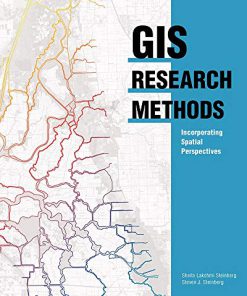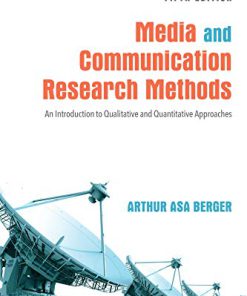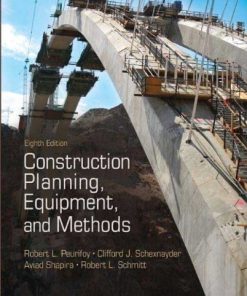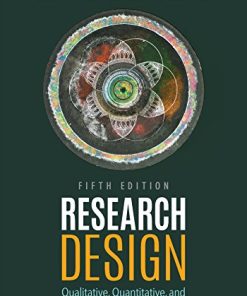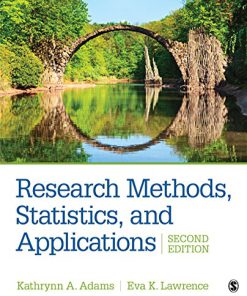Quantitative Methods and Socio-Economic Applications in GIS 2nd Edition – Ebook PDF Version
$50.00 Original price was: $50.00.$25.00Current price is: $25.00.
Quantitative Methods and Socio-Economic Applications in GIS 2nd Edition – Ebook PDF Version – Digital Instant Dowload.
Quantitative Methods and Socio-Economic Applications in GIS 2nd Edition – Ebook PDF Version – Digital Instant Dowload.

Product details:
- ISBN-10 : 1466584726
- ISBN-13 : 978-1466584723
- Author: Fahui Wang
The second edition of a bestseller, Quantitative Methods and Socio-Economic Applications in GIS (previously titled Quantitative Methods and Applications in GIS) details applications of quantitative methods in social science, planning, and public policy with a focus on spatial perspectives. The book integrates GIS and quantitative (computational) methods and demonstrates them in various policy-relevant socio-economic applications with step-by-step instructions and datasets. The book demonstrates the diversity of issues where GIS can be used to enhance the studies related to socio-economic issues and public policy.
Table of contents:
GIS AND BASIC SPATIAL ANALYSIS TASKS
Getting Started with ArcGIS: Data Management and Basic Spatial Analysis Tools
Spatial and Attribute Data Management in ArcGIS
Spatial Analysis Tools in ArcGIS: Queries, Spatial Joins, and Map Overlays
Case Study 1: Mapping and Analyzing Population Density Pattern in Baton Rouge, Louisiana
Summary
Identifying Contiguous Polygons by Spatial Analysis Tools
Measuring Distance and Time
Measures of Distance
Computing Network Distance and Time
The Distance Decay Rule
Case Study 2: Computing Distances and Travel Time to Public Hospitals in Louisiana
Summary
A: The Valued Graph Approach to the Shortest Route Problem
B: Estimating Travel Time Matrix by Google Maps API
Spatial Smoothing and Spatial Interpolation
Spatial Smoothing
Point-Based Spatial Interpolation
Case Study 3A: Mapping Place Names in Guangxi, China
Area-Based Spatial Interpolation
Case Study 3B: Area-Based Interpolations of Population in Baton Rouge, Louisiana
Summary
A: Empirical Bayes Estimation for Spatial Smoothing
B: The Network Hierarchical Weighting Method for Areal Interpolation
BASIC QUANTITATIVE METHODS AND APPLICATIONS
GIS-Based Trade Area Analysis and Application in Business Geography
Basic Methods for Trade Area Analysis
Gravity Models for Delineating Trade Areas
Case Study 4A: Defining Fan Bases of Cubs and White Sox in Chicago Region
Case Study 4B: Estimating Trade Areas of Public Hospitals in Louisiana
Concluding Remarks
A: Economic Foundation of the Gravity Model
B: A Toolkit for Implementing the Huff Model
GIS-Based Measures of Spatial Accessibility and Application in Examining Health Care Access
Issues on Accessibility
The Floating Catchment Area Methods
The Gravity-Based and Generalized 2SFCA Models
Case Study 5: Measuring Spatial Accessibility to Primary Care Physicians in Chicago Region
Concluding Comments
A: A Property of Accessibility Measures
B: A Toolkit of Automated Spatial Accessibility Measures
Function Fittings by Regressions and Application in Analyzing Urban Density Patterns
The Density Function Approach to Urban and Regional Structures
Function Fittings for Monocentric Models
Nonlinear and Weighted Regressions in Function Fittings
Function Fittings for Polycentric Models
Case Study 6: Analyzing Urban Density Patterns in Chicago Urban Area
Discussions and Summary
A: Deriving Urban Density Functions
B: Centrality Measures and Association with Urban Densities
OLS Regression for a Linear Bivariate Model
Principal Components, Factor and Cluster Analyses, and Application in Social Area Analysis
Principal Components Analysis
Factor Analysis
Cluster Analysis
Social Area Analysis
Case Study 7: Social Area Analysis in Beijing
Discussions and Summary
Discriminant Function Analysis
Spatial Statistics and Applications
The Centrographic Measures
Case Study 8A: Measuring Geographic Distributions of Racial-Ethnic Groups in Chicago Urban Area
Spatial Cluster Analysis Based on Feature Locations
Case Study 8B: Spatial Cluster Analysis of Place Names in Guangxi, China
Spatial Cluster Analysis Based on Feature Values
Spatial Regression
Case Study 8C: Spatial Cluster and Regression Analyses of Homicide Patterns in Chicago
Summary
Spatial Filtering Methods for Regression Analysis
ADVANCED QUANTITATIVE METHODS AND APPLICATIONS
Regionalization Methods and Application in Analysis of Cancer Data
The Small Population Problem and Regionalization
The Spatial Order and the Modified Scale-Space Clustering (MSSC) Methods
The REDCAP Method
Case Study 9: Constructing Geographical Areas for Analysis of Late-Stage Breast Cancer Risks in the Chicago Region
Summary
A: The Poisson-Based Regression Analysis
B: A Toolkit of the Mixed-Level Regionalization Method
System of Linear Equations and Application of Garin-Lowry Model in Simulating Urban Population and Employment Patterns
System of Linear Equations
The Garin-Lowry Model
Case Study 10: Simulating Population and Service Employment Distributions in a Hypothetical City
Discussion and Summary
A: The Input-Output Model
B: Solving a System of Nonlinear Equations
A Toolkit for Calibrating the Garin- Lowry Model
Cellular Automata (CA) for Urban Land Use Modeling
Linear Programming and Applications in Examining Wasteful Commuting and Allocating Health Care Providers
Linear Programming and the Simplex Algorithm
Case Study 11A: Measuring Wasteful Commuting in Columbus, Ohio
Integer Programming and Location-Allocation Problems
Case Study 11B: Allocating Health Care Providers in Baton Rouge, Louisiana
SUMMARY
A: Hamilton’s Model on Wasteful Commuting
B: Coding Linear Programming in SAS
A Programming Approach to Minimal Disparity in Accessibility
Monte Carlo Method and Its Application in Urban Traffic Simulation
Monte Carlo Simulation Method
Travel Demand Modeling
Examples of Monte Carlo-Based Spatial Simulation
Case Study 12: Monte Carlo-Based Traffic Simulation in Baton Rouge, Louisiana
Summary
References
Title tag
Explore the 2nd Edition of Quantitative Methods and Socio-Economic Applications in GIS
Unlock New Insights with the 2nd Edition of Quantitative Methods and Socio-Economic Applications in GIS
Dive Deeper into GIS with Quantitative Methods and Socio-Economic Applications – 2nd Edition
You may also like…
Uncategorized
Molecular Diagnostics Fundamentals, Methods and Clinical Applications 2nd Edition, (Ebook PDF)
Ebook
Research Design: Qualitative, Quantitative, and Mixed Methods Approaches 5th Edition, (Ebook PDF)








